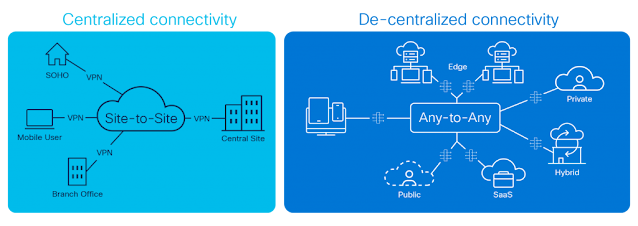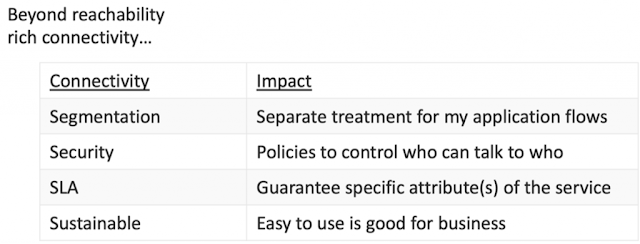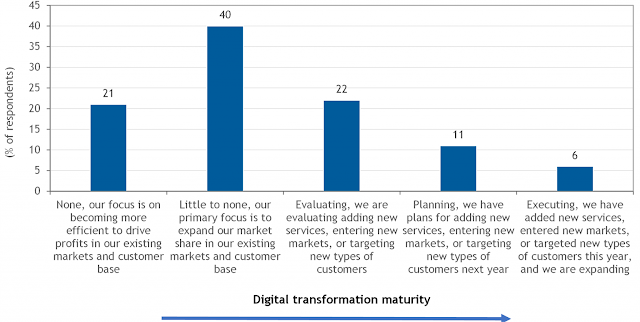The ongoing global pandemic, now approaching its third year, has profoundly illustrated the critical role of the internet in society, changing the way we work, live, play, and learn. This role will continue to expand as digital transformation becomes even more pervasive. However, connecting more users, devices, applications, content, and data with one another is only one dimension to this expansion.
Another is the new and emerging types of digital experiences such as cloud gaming, augmented reality/virtual reality (AR/VR), telesurgery using robotic assistance, autonomous vehicles, intelligent kiosks, and Internet of Things (IoT)-based smart cities/communities/homes. These emerging digital experiences are more interactive, bandwidth-hungry, latency-sensitive, and they generate massive amounts of data useful for valuable analytics. Hence, the performance of public and private networks will be progressively important for delivering superior digital experiences.
Network performance, however, is increasingly dependent on the complex internet topology that’s evolving from a network of networks to a network of data centers. Data centers are generally where applications, content, and data are hosted as workloads using compute, storage, and networking infrastructure. Data centers may be deployed on private premises, at colocation facilities, in the public cloud, or in a virtual private cloud and each may connect to the public internet, a private network, or both. Regardless, service providers, including but not limited to communication service providers (CSPs) that provide network connectivity services, carrier neutral providers that offer colocation/data center services, cloud providers that deliver cloud services, content providers that supply content distribution services, and software-as-a-service (SaaS) application providers all play a vital role in both digital experiences and network performance. However, each service provider can only control the performance of its own network and associated on-net infrastructure and not anything outside of its network infrastructure (i.e., off-net). For this reason, cloud providers offer dedicated network interconnects so their customers can bypass the internet and receive superior network performance for cloud services.
New and emerging digital experiences depend on proximity
In the past, service providers commonly deployed a relatively small number of large data centers and network interconnects at centralized locations. In other words, that’s one large-scale data center (with optional redundant infrastructure) per geographic region where all applicable traffic within the region would backhaul to. New and emerging digital experiences, however, as referenced above, are stressing these centralized data center and interconnect architectures given their much tighter performance requirements. At the most fundamental level, the speed of light determines how quickly traffic can traverse a network while computational power defines how fast applications and associated data can be processed. Therefore, proximity of data center workloads to users and devices where the data is generated and/or consumed is a gating factor for high quality service delivery of these emerging digital experiences.
Consider the following:
◉ High bandwidth video content such as high-definition video on demand, streaming video, and cloud-based gaming. Caching such content closer to the user not only improves network efficiency (i.e., less backhaul), but it also provides a superior digital experience given lower network latency and higher bandwidth transfer rates.
◉ Emerging AR/VR applications represent new revenue opportunities for service providers and the industry. However, they depend on ultra-low network latency and must be hosted close to the users and devices.
◉ Private 5G services including massive IoT also represent a significant new revenue opportunity for CSPs. Given the massive logical network scale and massive volume of sensor data anticipated, data center workload proximity will be required to deliver ultra-reliable low-latency communications (URLCC) and massive machine-type communications (mMTC) services as well as host 5G user plane functions so that local devices can communicate directly with one another at low latency and using high bandwidth transfer rates. Proximity also improves network efficiency by reducing backhaul traffic. That is, proximity enables the bulk of sensor data to be processed locally while only the sensor data that may be needed later is backhauled.
◉ 5G coordinated multipoint technologies can also provide advanced radio service performance in 5G and LTE-A deployments. This requires radio control functions to be deployed in proximity to the remote radio heads.
◉ Developing data localization and data residency laws are another potential driver for data center proximity to ensure user data remains in the applicable home country.
These are just a few examples that illustrate the increasing importance of proximity between applications, content, and data hosted in data centers with users/devices. They also illustrate how the delivery of new and emerging digital experiences will be dependent on the highest levels of network performance. Therefore, to satisfy these emerging network requirements and deliver superior digital experiences to customers, service providers should transform their data center and interconnect architectures from a centralized model to a highly distributed model (i.e., edge compute/edge cloud) where data center infrastructure and interconnects are deployed at all layers of the service provider network (e.g., local access, regional, national, global) and with close proximity to users/devices where the data is generated and/or consumed.
This transformation should also include the ubiquitous use of a programmable network that allows the service provider to intelligently place workloads across its distributed data center infrastructure as well as intelligently route traffic based upon service/application needs (e.g., to/from the optimal data center), a technique we refer to as intent-based networking. Further, in addition to being highly distributed, edge data centers should be heterogeneous and not one specific form factor. Rather, different categories of edge data centers should exist and be optimized for different types of services and use cases.
Four categories of edge data centers
Cisco, for example, identifies four main categories of edge data centers for edge compute services:
1. Secure access service edge (SASE) for hosting distributed workloads related to connecting and securing users and devices. For example, secure gateways, DNS, cloud firewalls, VPN, data loss prevention, Zero Trust, cloud access security broker, cloud onramp, SD-WAN, etc.
2. Application edge for hosting distributed workloads related to protecting and accelerating applications and data. For example, runtime application self-protection, web application firewalls, BoT detection, caching, content optimization, load balancing, etc.
3. Enterprise edge for hosting distributed workloads related to infrastructure platforms optimized for distributed applications and data. For example, voice/video, data center as a service (DCaaS), industrial IoT, consumer IoT, AI/ML, AR/VR, etc.
4. Carrier edge for hosting distributed workloads related to CSP edge assets (e.g., O-RAN) and services including connected cars, private LTE, 5G, localization, content and media delivery, enterprise services, etc.
Of course, applicability of these different categories of edge compute services will vary per service provider based on the specific types of services and use cases each intends to offer. Carriers/CSPs, for example, are in a unique position because they own the physical edge of the network and are on the path between the clouds, colocation/data centers, and users/devices. Of course, cloud providers and content providers are also in a unique position to bring high performance edge compute and storage closer to users/devices whether via expanding their locations and/or hosting directly on the customer’s premises. Similarly, carrier neutral providers (e.g., co-location/data centers) are also in a unique position given their dense interconnection of CSPs, cloud providers, content providers, and SaaS application providers.































